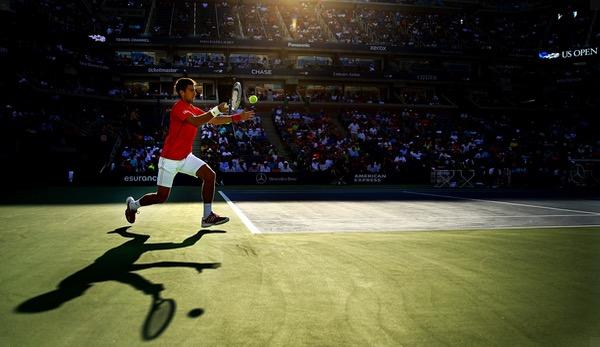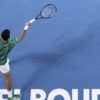Tennis
Tennis: Service-Corner: Playing aggressively without losing speed
The unconditional attack will not lead to success for most players unless they are called Roger Federer. The Swiss player plays the aggressive game to perfection, making himself almost always independent of his opponent. Whoever stands on the other side of the net seems irrelevant – Federer plays his game and wins.
Who wants to conjure up aggressive tennis on the court as a normal human being, has to consider however some facts. Playing wildly and aggressively as you can, you quickly lose yourself at your own pace.
From one shot to the next, they want to play even more aggressively and, above all, faster. From the third or fourth shot, however, this game idea becomes extremely risky and causes more mistakes than profits in the long run.
I’m no fan of the theory that you should always play your own game. Tennis is complex and thrives on the dynamics of constant change. When the sun moves in a match or when the wind turns, you also adapt to these circumstances by changing your ball throw or position.
The same principle applies to your own, in this case aggressive tennis. The basic game idea of the unconditional offensive works as long as the opponent favours it through his game. The position in the rallies is of great importance for the aggressive player and his opponent. If both players play aggressively and at a high speed, the player who is able to adapt his game better to the game situation will win.
The balance is the key ingredient that makes the aggressive game really effective. This requires a high degree of understanding of the game and a good eye. If you think you can play successfully tennis with merciless bolting, you won’t have a chance against good opponents.
The target of the aggressive player must be the opponent’s short ball in each rally. Aggressive and fast tennis is difficult to enforce when the opponent plays slowly, half high and very close to the baseline. This quickly leads to supposedly easy mistakes. These slight mistakes provoke anger. D
he anger causes even more minor mistakes. This creates a cycle that is considered illogically. In this example, the opponent made his contribution to the easy mistakes by having an excellent length in his strokes. This scenario shows that a good understanding of the game is essential for aggressive tennis.
In order to be able to play aggressively, you should divide your own game into three levels:
The first two levels are used to force the opponent to short balls. Extreme topspin shots can put “pressure” on the opponent without going too fast. A higher speed would result in too much risk.
“Comfortable strokes such as the slice or the long ball played close to the baseline can ask the opponent questions. Before you answer with a winner, you have to ask your opponent a difficult question. Only then can the third stage, the “power amplifier”, be ignited.
The final stage is the stroke that is to initiate the end of the ball change and thus the point gain. It doesn’t have to be the first shot in the total offensive that leads to a direct point win. You can also score points with the second or third shot in this offensive position.
Roger Federer often has an easy time playing with the last shot in the rally. Whether it’s a simple ball into the open field or a forehand from the T-field, while the opponent can only watch outside the field. These situations are the result of the three described levels.













You must be logged in to post a comment Login